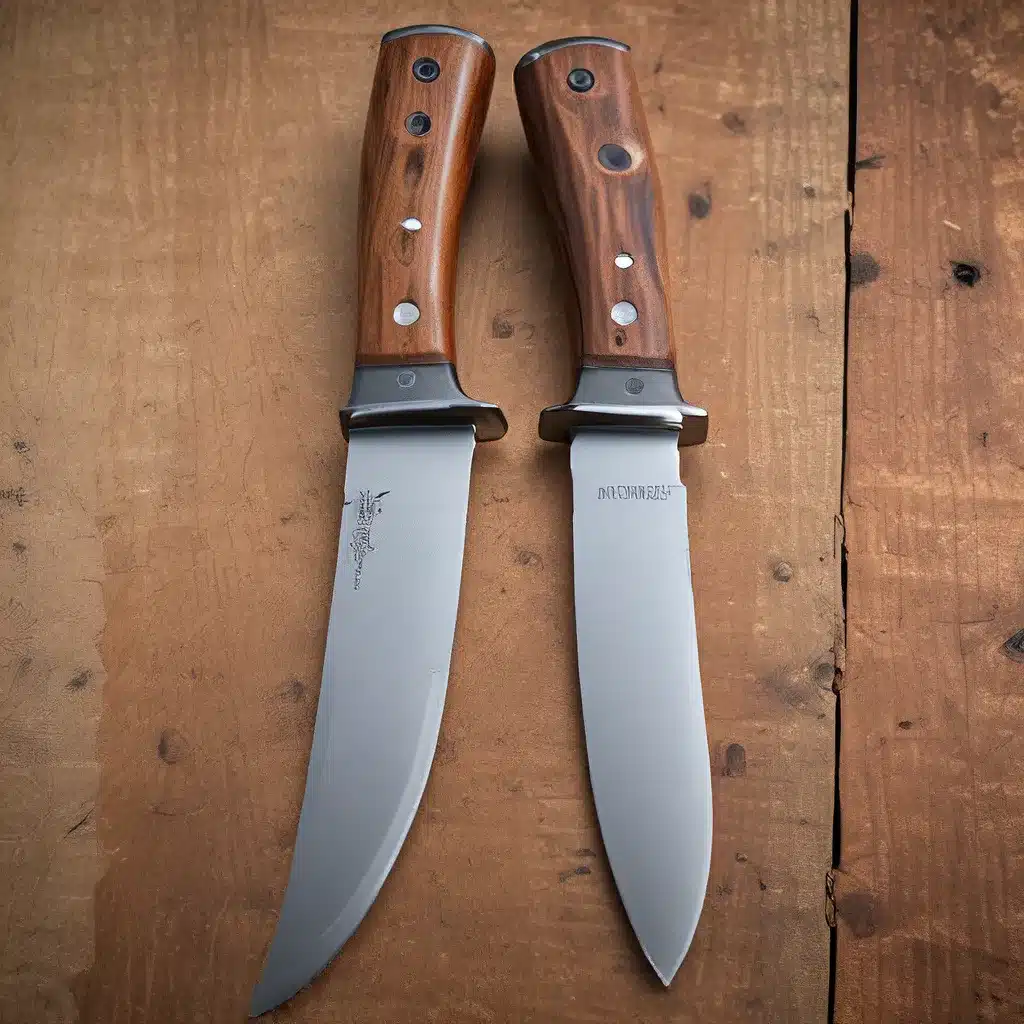
As I sit here, twirling my favorite kitchen knife in my hands, I can’t help but marvel at the rich history and evolution that’s brought us to this point. From the humble stone tools of our ancestors to the high-tech, precision-engineered blades we wield today, the story of knife technology is a fascinating one – a tale of innovation, cultural exchange, and the relentless human drive to improve upon the tools that shape our world.
The Stone Age Roots of Cutting-Edge Design
It’s almost hard to believe, but the earliest known human-made tools were nothing more than sharpened stones. These primitive implements, crafted by our early ancestors some 2.6 million years ago, may have seemed rudimentary, but they marked the first step in a journey that would eventually lead to the culinary wonders we enjoy today.
As the millennia passed, our ancestors’ stone tools became increasingly sophisticated, with the development of the Oldowan and Acheulean traditions. These more advanced implements, featuring flakes and bifacial handaxes, allowed our forebears to tackle a wider range of tasks, from hunting and gathering to the burgeoning craft of food preparation.
But the real breakthrough came with the discovery of metal. The Bronze Age saw the emergence of copper and then bronze knives, which offered a significant improvement in both durability and cutting ability. And with the advent of the Iron Age, the stage was set for the rise of the sword-makers – those skilled artisans who would go on to have a profound influence on the future of knife design.
The Sword is Mightier Than the Spoon
It’s no coincidence that the two global powerhouses of modern knife production, Solingen, Germany and Seki, Japan, were once renowned for their sword-making prowess. The transition from military to domestic blades was a gradual one, but the skills and techniques honed on the battlefield would ultimately shape the evolution of the chef’s knife.
In Solingen, the German knife makers forged a reputation for creating sturdy, heavy-duty blades – tools built to withstand the rigors of combat and the kitchen alike. Their knives, characterized by a pronounced curve towards the tip, were designed for the rocking motion that has become a staple of professional food preparation.
Across the sea, the Japanese swordsmiths were developing a radically different approach. By layering steels of varying hardness, they were able to create blades that were both razor-sharp and remarkably durable. This innovative technique, passed down through generations, would come to define the distinctive aesthetics and performance of Japanese kitchen knives.
East Meets West: The Culinary Fusion of Knife Design
As globalization accelerated in the modern era, the worlds of German and Japanese knife-making collided, giving rise to a new generation of blades that combined the best of both traditions. The emergence of hybrids like the Santoku and Gyuto knives reflected the increasingly diverse culinary landscape, where chefs and home cooks alike were exploring a myriad of global flavors and techniques.
But the cross-pollination didn’t stop there. Brands like Herman Knives have been at the forefront of this culinary fusion, blending innovative materials, advanced manufacturing processes, and a deep respect for the past to create knives that are truly cutting-edge. By drawing inspiration from the masters of old while embracing the latest technological breakthroughs, these modern-day artisans are redefining what a great knife can be.
A Future Forged in Tradition
As I twirl my knife, I can’t help but marvel at the countless hands that have shaped its evolution – from the stone-wielding cavepersons of old to the precision-engineered masterpieces of today. It’s a story of human ingenuity, cultural exchange, and an unending quest to create tools that not only get the job done but bring us closer to the joy of cooking and the art of gathering around the table.
And who knows what the future holds? As the global culinary landscape continues to evolve, and as new materials and manufacturing techniques emerge, the next chapter in the story of knife technology is yet to be written. But one thing is certain: wherever the path leads, it will be paved with the lessons of the past, the innovations of the present, and the boundless potential of the human spirit. So let’s keep sharpening our skills, exploring new frontiers, and savoring the rich tapestry of flavors that this world has to offer.


